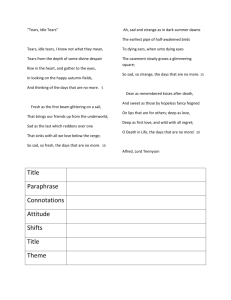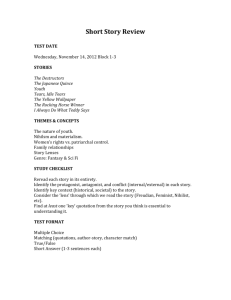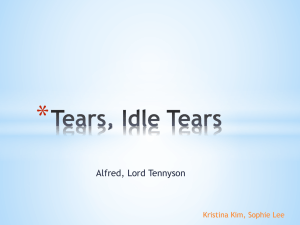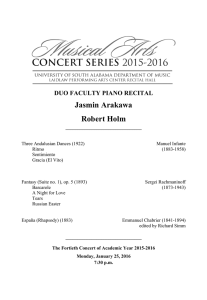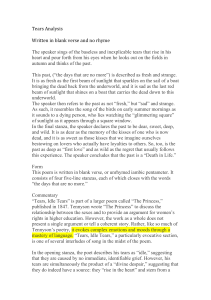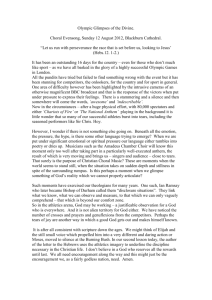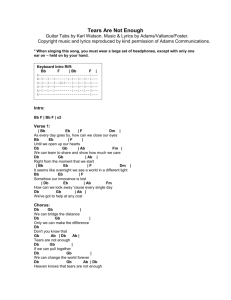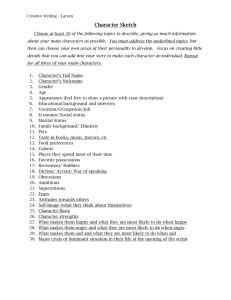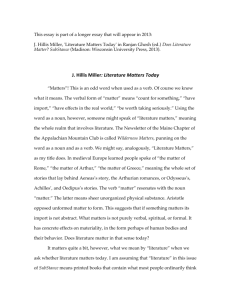Tears, Idle Tears
advertisement
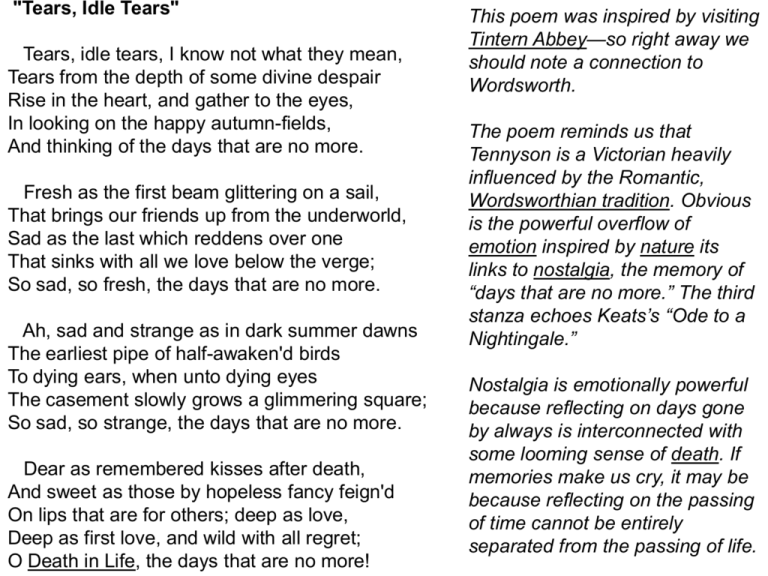
"Tears, Idle Tears" Tears, idle tears, I know not what they mean, Tears from the depth of some divine despair Rise in the heart, and gather to the eyes, In looking on the happy autumn-fields, And thinking of the days that are no more. Fresh as the first beam glittering on a sail, That brings our friends up from the underworld, Sad as the last which reddens over one That sinks with all we love below the verge; So sad, so fresh, the days that are no more. Ah, sad and strange as in dark summer dawns The earliest pipe of half-awaken'd birds To dying ears, when unto dying eyes The casement slowly grows a glimmering square; So sad, so strange, the days that are no more. Dear as remembered kisses after death, And sweet as those by hopeless fancy feign'd On lips that are for others; deep as love, Deep as first love, and wild with all regret; O Death in Life, the days that are no more! This poem was inspired by visiting Tintern Abbey—so right away we should note a connection to Wordsworth. The poem reminds us that Tennyson is a Victorian heavily influenced by the Romantic, Wordsworthian tradition. Obvious is the powerful overflow of emotion inspired by nature its links to nostalgia, the memory of “days that are no more.” The third stanza echoes Keats’s “Ode to a Nightingale.” Nostalgia is emotionally powerful because reflecting on days gone by always is interconnected with some looming sense of death. If memories make us cry, it may be because reflecting on the passing of time cannot be entirely separated from the passing of life.
